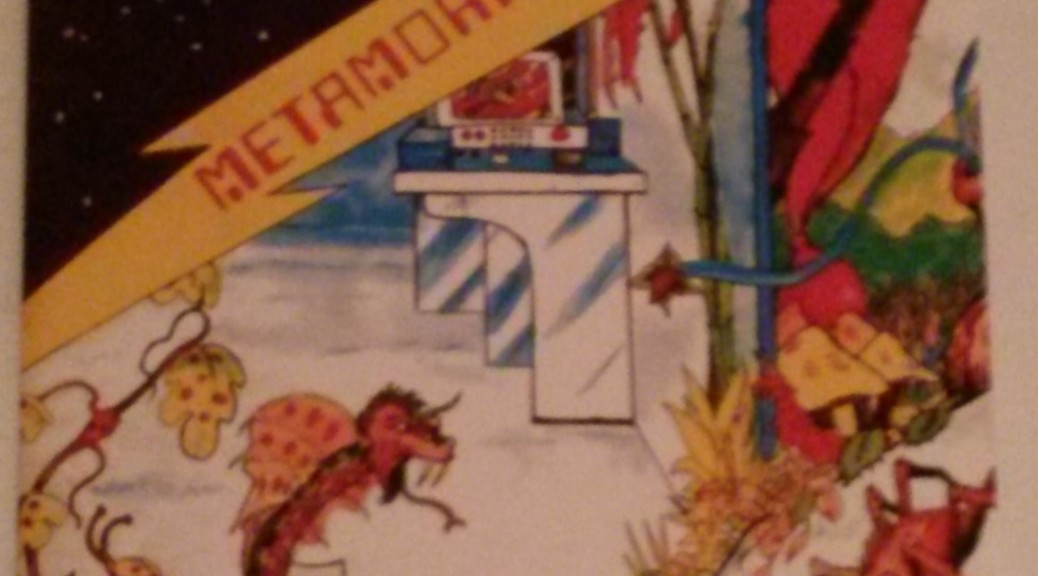I have found that in the last few weeks as I prepare a Metamorphosis Alpha scenario to run at UCon, play test it online with two different groups, and end up with a weekly Saturday game and bi-weekly Sunday game, I don’t have as much time to read and browse forums and find more goodies to spend my money.
This is good. I’m not broke, and I’m not poor, I just prefer to pay cash for things, and I already have multiple game systems to choose from. Both the books and manuals I have, and many different PDFs. While I like collecting lots of different ideas for tables and how others do things, in the end, if all one does is collect bits and bobs and never runs a game, what’s the point? {I’m also going to attend ConOnTheCob in October, UCon in November, the company holiday party is in Orlando, FL in December – I finally get to go to Disney World!, Marmalade Dog in February, GaryCon in March, etc.]
Other than helping out the creators when I buy things, if I’m not running at least one game of one of the rules I already have, I’m not doing the one thing I have written so often that I want to do.
I struggle with having “enough” prepared to be comfortable. the key for me is determining what is the right “enough” to have. It doesn’t matter the game system.
By jumping in and running Metamorphosis Alpha and having a regular commitment to keep running it, my outlook has changed. The task seems much less daunting, and the myriad of excuses of why I’m not ready yet fade away.
My in person AD&D campaign with my oldest son and his girlfriend faded away when they moved in with me in the months before my granddaughter was born. Preparations for parenthood, and figuring out their new family dynamics have put that on the back burner. Thus the desire to move that campaign online and get it going that way. Starting up with a new group of people do not guarantee they would make the same choices and check out the same things as my face to face players. Once I get a bit more done with my MA online game(s), I will do more to get my AD&D game going online.
This doesn’t mean no preparation, and no ideas for suggestions for players, etc. There needs to be enough of a framework that it holds together. What this looks like will change and adapt, or it should, once players start interacting with the world. I have lots of ideas, but it is what the players do with my descriptions and starting conditions that is interesting. Watching players interact with the world I have presented and seeing them debate and struggle over courses of action, or regret actions taken, just makes the whole thing come alive. This is cooperative play/storytelling at its finest!
So I have dug in and started using all the pads, pens, dice, books, and miscellaneous notes I have gathered. The results are encouraging, and I find that I want more! I have enough ideas to keep things rolling, and the players have their own ideas, so I don’t see burnout with roleplaying as an issue. Burnout is only a threat based on how crazy busy work gets in December and January. [Oh the “joys” of being a support analyst for payroll and accounting software at year end/W-2 time, plus a new set of forms this year for the ACA.]
I don’t plan on participating in NaNoWriMo this year. I still need to write the last few chapters of my novel, so I can start on the second draft/revisions. I know I can do it, since I have over 60,000 words that I wrote last year in November. It’s just a matter of sitting down and doing the work. Like most things in life, the ad slogan, “Just Do It.” fits so well.
I have a lot of different irons in the fire, and without the distraction of all the different TV shows I watched last Fall, Winter, and Spring, I have gotten more done. It’s all about priorities, and making a decision to act on them, and following through.
Well, that’s enough stream of consciousness for now. I think I’ve convinced myself that I can do the running of games online, and that I can handle as much as I want to handle, with all the irons I have elected to have in so many fires. I can save up shows to binge watch on long weekends, or not worry about them at all. I can put as much effort into game preparation as I want, but choose to focus only on preparation that makes the most sense and has the best chance of being used in play. I can also deal with various projects around my 95 year old house, as well as down-sizing a bunch of non-gaming stuff. I like the idea of a simple life and being able to live out of a van. But I’d need most of a semi-trailer right now. My goal is to go through all my stuff and pare it down now, so in X years, when I’m gone, my sons won’t have to deal with it. I like my stuff, but gadgets and things become obsolete or lose their appeal.
NOTE: I wrote this late at night, and made one pass at it, and it shows in all my rambling and additional topics. I’m not going to go back and fix it. My point is in here. Find it if you can. LOL!
P.S. Don’t forget to talk like a pirate today, ye scurvy dogs!



![A-to-Z Reflection [2015]](https://followmeanddie.com/wp-content/uploads/2015/05/A-to-Z-Reflection-2015-Lg.jpg)





